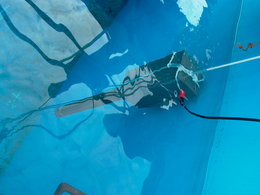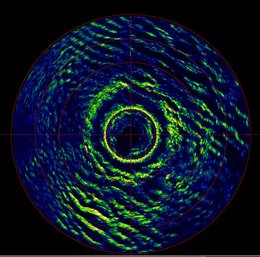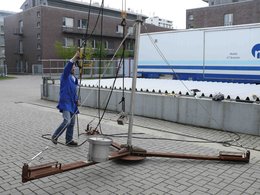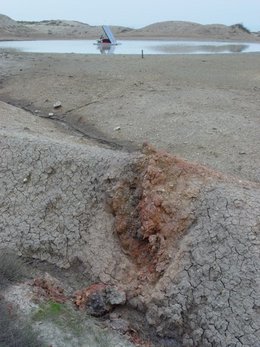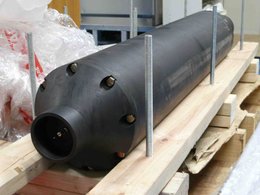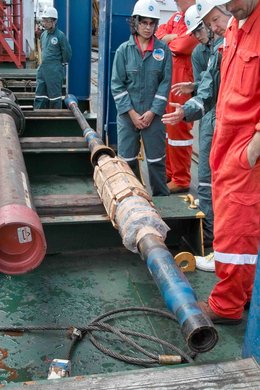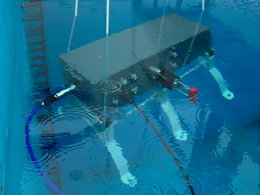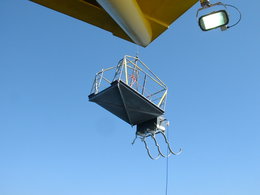- Marine Geotechnics
- Technologies
- Observatories
Observatories
FINO long-term pore pressure probe
In September 2006, a pore pressure-lance was connected to the underwater docking station, which itself is attached sea-bed near to a steel-girder of the FINO1 platform. This lance can measure pore-pressure and temperature in the first 2 meters below the sea-bed. It was developed to investigate if pore-pressure changes can be detected when the platform moves (e.g. during storm events) and if the movement of the platform has any impact on the stability (liquefaction) of the sediments close to the foundation.
360° scanning sonar system
In 2007, a 360° scanning sonar tower equipped with an Imagenex 881L sonarsystem was developed at MARUM, Bremen. It scans a radius of up to 200 m at programmed time intervals to monitor sediment dynamics and remobilisation. The modular tripod allows the user to install the sonar 3 m or 5.5 m above sealevel to monitor over tidal cycles or even months. Areas of interest include estuaries, tidal inlets and dune fields in German Bight and North and Baltic Sea.
Long-term monitoring of mud volcano activity
The first two instruments were installed in July 2007 in Azerbaijan, to monitor the activity of Dashgil mud volcano close to the Caspian Sea coastline:
- A 2 m-long pore pressure and temperature lance
- Two gas flow meter
By end of 2015, we replaced the old system with a new observatory, measuring pressure and temperature in the actively venting main crater
For details, see chapter in Projects and Research areas
IODP borehole monitoring
Borehole-Monitoring using so-called CORK systems (Circulation Obviation Retrofit Kits) has been successfully carried out for almost two decades within the scientific marine drilling programmes ODP and IODP. As a simpler approach preceding the CORKs, two "smart plugs" were developed together with colleagues from Pacific Geoscience Centre, Canada (Earl Davis, Bob Macdonald, Alison Labonte, Bob Meldrum) and Pennsylvania State University, USA (Demian Saffer) in 2009. The instruments measure pore pressure and temperature variations in the cased, partially perforated borehole before the final CORK is installed.
The so-called "smart plugs" are part of a mechanical separation in the casing (bridge plug) that decouple the ocean water body from the well hydrologically. They are self-contained instruments which are retrieved prior to CORKing. The aims include monitoring of pore pressure variations in fault zones. Each "smart plug" contains 2 Paroscientific absolute pore pressure transducers with Bennest period counters as well as 4 temperature transducers. The first deployment occurs during IODP Expedition 319 with the NanTroSEIZE (Nankai Trough Seismogenic Zone Experiment) project, whose foremost objective is to unravel seismogenic processes in the subduction zone offshore Japan.



